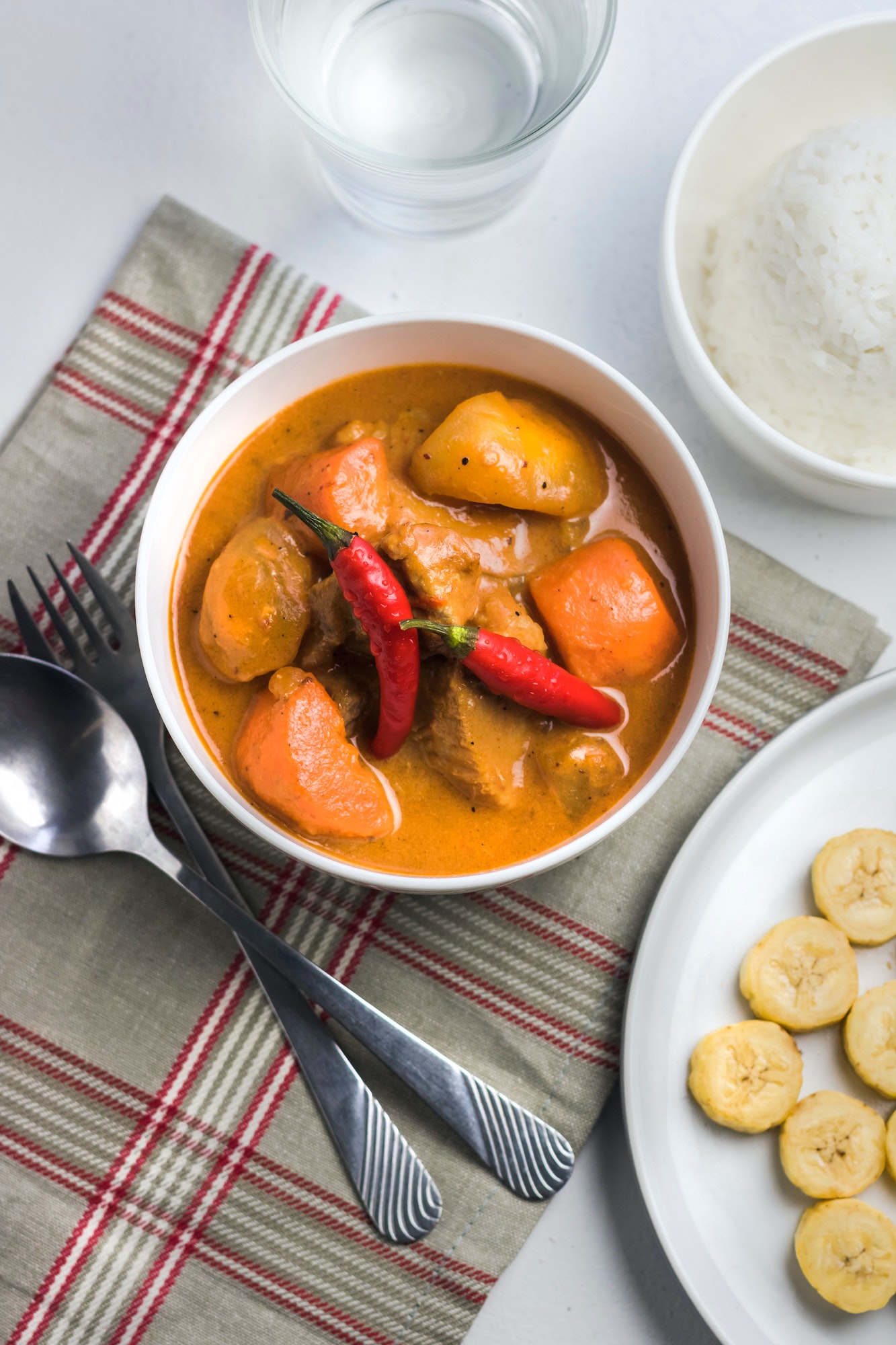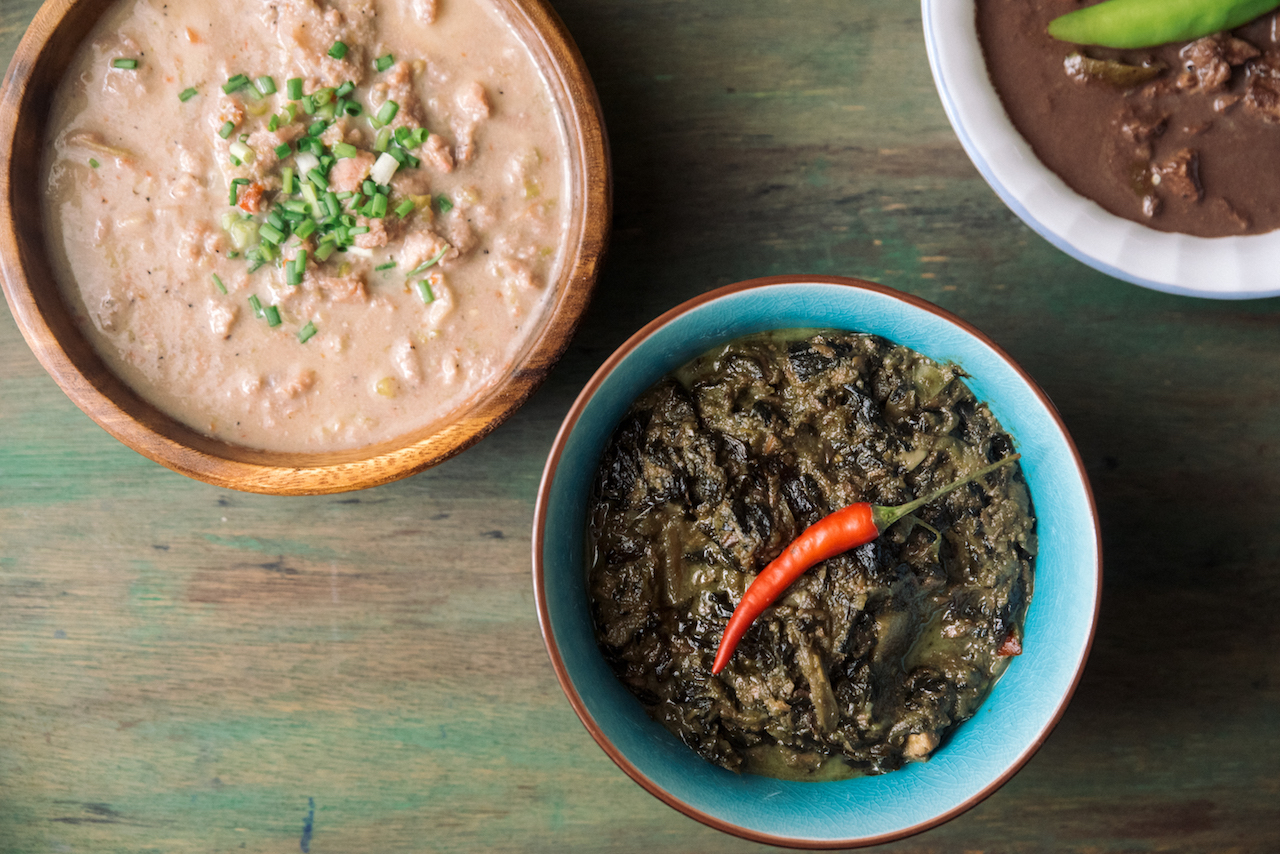For a long while, food writers such as myself were hounded by fellow Filipinos with the question “Why is our food not known in the world?” But when Filipino food suddenly burst into the American culinary landscape, which everyone mistakenly assumes going “international,” the reaction was of puzzled surprise expressed in the query: “What is it about our food that they like?”
Both questions reveal how most Filipinos don’t know much about their food. They know how to eat and cook it but don’t know what makes it a cuisine worth knowing, writing about and eaten by others. That was further spurred by how our food was regarded by foreigners.
Dissect and digest
In 1991, Raymond Sokolov wrote about our cuisine in his book “Why We Eat What We Eat” (Summit Books). His essay began with a “seasoned journalist” who opined that it’s “the worst food in Asia.” And “a Princeton-minted Orientalist” told the author, “I never had a good meal in a Manila restaurant.”
Being a writer-researcher, Sokolov wasn’t fazed by what he was told but came here without preconceptions save for the knowledge that this is an Asian country that was an entrepôt, open to trade for centuries with many countries such as China, Japan and India, was colonized for centuries by Spain, then for a few decades by Americans. His conclusion: “I have never encountered a food world more complex and diverse yet more of itself… a harmonious panoply cobbled together from everywhere and transmuted, Filipinized into a comestible alloy with its own special properties.” It is the best observation of our food, not because it is complimentary but because it is an accurate description. The operative word is “Filipinized,” but one has to look beyond the Spanish, Mexican or even Chinese names given to dishes to see how we have put together ingredients and applied flavors the way we like it, not too strong, quite subtle. “Nag-aaway ang lasa” (different tastes vying for attention) was how one Filipino cook put it.

And then there is how our food is presented. Oh, the oily brown stuff is just one of the negatives. And then there’s the turo-turo at the carinderia where the already cooked food is reheated at the neighborhood eatery. But the most misguided is how our food has been categorized as fit only for the adventurous, the balut, dinuguan, bagoong—fermented duck embryo, blood stew, and pastes of shrimp and fish. Those produced a sense of thrill and humor but gave the wrong impression. It must have been a contributing factor to keeping our food under wraps out of a sense of hiya (embarrassment), according to an article by Tim Carman in the Washington Post (2015) about how Filipino cuisine has finally arrived.
Yet it wasn’t only those “fear factor” foods that stymied the promotion of our cooking. When doing my initial research into regional cuisine 20 years ago, the local cooks would cite fiesta food because it was “special.” We do tend to undermine our simple paksiw, sinigang, inihaw—vinegar-stewed, sour soup, charcoal-grilled. That made me rephrase my question to “What did you eat today?” just to get their daily dishes.
That attitude, the dismissal of our food as not good enough to mention, brings to mind one of the desserts in Bulacan called pacencia. It’s made of Jacob’s crackers (the brand is a must in the recipe) crushed into condensed milk. Mila Enriquez, who wrote “Kasaysayan ng Kaluto ng Bayan” (Zita Publishing, 1993), a National Book Awardee for food writing, said the dessert name was coined because the host would invariably say while serving it, “Pasensiya na kayo at yan lang ang ating minatamis.” (Please bear with this ordinary and only dessert.)
That Filipino food has arrived doesn’t come as a surprise for those of us who write about it. It has taken years, but slowly and surely it has surfaced to declare what it is—food that deserves to be known and eaten.
From pen to plate
Doreen Gamboa Fernandez, Filipino food writer, penetrated the international culinary scene with her papers delivered at the Oxford Symposium on Food and Cookery and became a friend of its founder, Alan Davidson, as well as renowned American writers such as Sokolov. Through her books and scholarship, Filipino cuisine has gone beyond the kitchen into the fields of history and anthropology, deserving mention in books that matter such as the “Oxford Companion to Food” (Oxford University Press, 1993).
But the more pervasive spread of our cooking was away from the rarefied atmosphere of the academe. It was in the kitchens abroad where Filipino domestic workers cooked the food not only for themselves but more especially for the wards they fed.
When I was asked years ago how our food could go international, I replied that we shouldn’t be worried because our domestic helpers will do just that. And so it has come to pass.
That Filipino food has arrived doesn’t come as a surprise for those of us who write about it. It has taken years, but slowly and surely it has surfaced to declare what it is—food that deserves to be known and eaten.
There were stories published in the papers about those wards now grown up coming here to eat the food they grew up on. Anthony Bourdain devoted a good part of his recent visit to watching the former “yaya” (nanny) of one of his directors, Erik Osterholm, cook. Bourdain himself had a Filipina yaya for his daughter who always told him that her yaya’s sweets were better than his. Yet the most impressive tribute to the cooking by our overseas workers was the thick book “Milkier Pigs and Violet Gold” by Bryan Koh, a Singaporean who grew up with Filipina yayas. He researched Filipino cooking throughout the country and collected recipes, which he adapted according to his own liking, helped no doubt by his culinary studies. As editor of the book, I found myself the student of our cuisine as well because Koh had so much information I had never encountered before.
One of the most astonishing introductions to Filipino food abroad was done by Nora Villanueva Daza. She opened Aux Iles Philippines in Paris in the 1970s. She also managed Maharlika in New York, listed, like her Paris restaurant, as outstanding, and then Galing-Galing in Manila, when restaurants serving our food were not on the horizon and which she established because she couldn’t find a restaurant that served good kare-kare.
But there were also unknown owners of restaurants like the one in Amsterdam reported by my relatives as a small success in the 1980s.
A big promoter of our cooking is Via Mare’s Glenda Rosales Barretto. She has catered banquets for international conferences and visiting royalty as well as heads of state at Malacañang receptions using our dishes but upgraded to international standards in presentation and taste. In 1992, she was tasked to manage the Filipino restaurant in Seville, Spain, which had long lines of visitors wanting to eat there. This feat was duplicated in Lisbon in 1998 and in Japan in 2005. She is still promoting our food through her restaurants and her books.

In 2008, we were already thrilled by the fact that Filipino restaurants were sprouting in San Francisco and Los Angeles in the United States. People were writing about Filipino chefs like Romy Dorotan, who then operated Cendrillon in Soho, New York City, but has since moved to Brooklyn in his renamed resto, Purple Yam. He and his wife Amy Besa are untiring researchers and promoters; they wrote the book “Memories of Philippine Kitchens” and gave talks in the United States and around the Philippines.
Sometime in between, a rare mention of our food was already heartwarming, such as in essays by Calvin Trillin, who may not have known the names of the food he was eating but by his description we know those mentioned to be barbecue, pancit, and lumpia.
That list of eateries and restaurants has gotten long, at least in the United States, hastened by bloggers and TV personalities. Most notable is Andrew Zimmern, who must have come to the country lured by the tamilok (shipworm) for his “Bizarre Foods” show. Again, it wasn’t quite the ideal promotion we hoped. But then he must have tasted other more normal cooking, which made him predict that “Filipino food is the next big thing.”
Now what?
But should we rest on our laurels? No, because all trends pass. So how do we make our food stay in people’s minds and palates? Twenty years ago, Sokolov wrote how “Filipinos, isolated from one another by their many local languages and their island geography, are just beginning to learn about [their food] in their multifarious totality.” Today, that is happening, helped by technology and travel. Regional cuisine is now easily accessible and easy to know about. Filipino restaurants abound around the country and are certainly making it. If we learn to like our food and marvel at its “multifarious totality” that will be transmitted to the world, there is no need to hire foreign chefs to make our food palatable the way the Thais have done it.
While many of the writings have said much about the many outside influences that helped to form our food today, we should also cite how Filipino cuisine has influenced other cuisines of the world.
But something more should be said about our food beyond the cooking. While many of the writings have said much about the many outside influences that helped to form our food today, we should also cite how Filipino food has influenced other cuisines of the world. For instance, because the Spanish have chipirones en su tinta (squid cooked in its ink), it was presumed that our adobong pusit takes after that dish. But Fernando Zialcita, who heads the Cultural Heritage Studies Program at the Ateneo de Manila University, said that before the 18th century, squid ink was unknown in Europe. It is theorized that its use was brought by the expelled Jesuits who were deported from here to Spain and Italy in the 18th century.
The more compelling and documented influence was by Filipino sailors who jumped ship during the galleon trade to settle in Coyuca, Mexico and who introduced the cultivation of coconut trees and the making of tuba (coconut wine) as well as the method of distilling, an important method in the making of tequila from the mezcal or agave wine.
So is Filipino cuisine the next big thing? Well, what do we know really?
Originally published in F&B Report Vol. 14 No. 1





